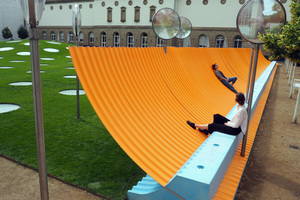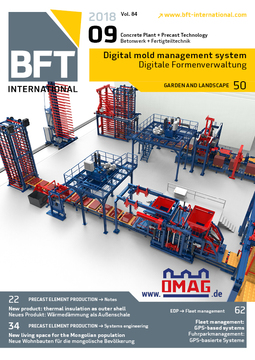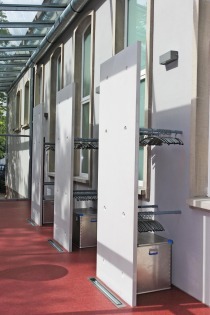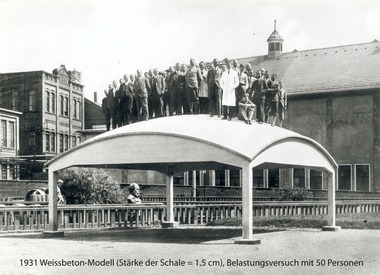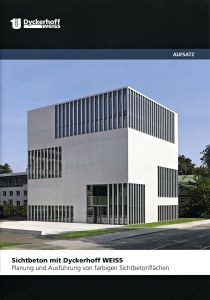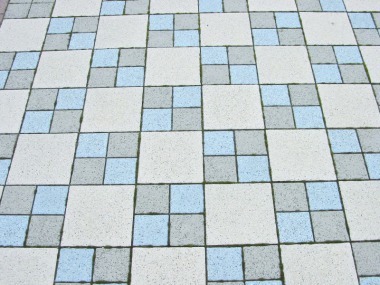Concrete art in the garden of the Städel Museum
“Colormaster F” – is what Manuel Franke calls his monumental 50-m long art object that provides the spatial boundary of the garden of the Städel Museum in Frankfurt am Main. The name itself gives an idea of the significance accorded the coloring: an orange corrugated-steel membrane has been cast into a bright-blue pedestal in a concrete element made on the basis of Dyckerhoff white cement. Dyckerhoff Weiss, an aesthete among the cements for manufacturing colored cements, is especially well-suited for coloring concrete components. The light natural color of the material brings out the pigmentation to the best intended advantage. Creation of the artwork was supported by Dyckerhoff.
“Colormaster F,” half sculpture and half painting, contrasts the lawn area, restricted on three sides by buildings, by forming a curved membrane of vivid monochrome colors. As insurmountable obstacle, the object blocks out the otherwise accustomed view and at the same time enables the beholder to experience the lawn hill in an entirely new way. The sculpture invites the spectator to play, explore and rest, enabling in this way an entirely new and interactive experience of the familiar garden.
“Colormaster F” based on Dyckerhoff Weiss
The exhibition hall dedicated to contemporary art is located directly under the garden. Dyckerhoff also has a special relationship to this hall: the stairs leading downward were constructed of a white binder from Dyckerhoff, and the floor in the exhibition hall is surfaced with Dyckerhoff Terraplan – an aesthetic, appealing and very durable flooring system, likewise based on Dyckerhoff Weiss.
Manuel Franke has repeatedly used this title, whereby the “F” stands here for the city of Frankfurt. The garden of the Städel is intended to be a place where people get in contact with art even without visiting the inside of the museum. In recent years, it has been successively filled with objects from many artists. Franke even partly integrated one object, the “Stehlinsen” by Adolf Luther, into the structure of “Colormaster F.”
Art object creates new perspectives
“Colormaster F” is not limited to a single viewer perspective. The object can never be seen in its entirety, but always consists of two irreconcilable views, depending on whether the observer rests on the hill of the garden hall or approaches the museum from Dürerstrasse/the city. When approaching from the garden side, the viewer can see the colors blue and pink, whereas visitors approaching from the city side are welcomed with blue and orange.
A total of 11.2 tons of Dyckerhoff Weiss were used in the creation of the sculpture. The blue color pigments were supplied by the company Scholz from the German city of Partenstein, and the concrete components were manufactured by Betonmanufaktur Kleemann from Rodgau.

